Damp & Mould: A Quick Guide
The issue of damp and mould and its effect on social housing tenants has been the subject of heated debate of late owing to the increased media spotlight resulting from the recent tragic case of Awaab Ishak in Rochdale. The news coverage has brought to the fore what is clearly something that continues to blight the lives of social tenants, however, it could be argued that the narrative has been skewed somewhat with the media painting social housing providers as uncaring when the reality is somewhat different.
This pitting of tenants of against landlords has dominated the discourse but as its central tenet, relies on an over-simplification of what is a complex issue. We’ll be further exploring the various facets of what is a contentious subject in a few weeks time via an in-depth article but before we dive deep into that, it’s important to understand what exactly damp and mould is, how it manifests itself and how it affect the quality of social tenants’ lives. So, read on to learn more…
What Is Damp?
Put simply, damp is the presence of water where is shouldn’t be. There are multiple possible causes of dampness but the most common are:
- Leaks and/or water ingress
- Bridging of the damp proofing course (DPC)
- Condensation
It’s important to understand that damp and mould are not the same thing and have different causes. We’ll explore this further later on in this guide but first let’s take a close look at the causes of damp as detailed above.
Leak or Water Ingress?
Whilst broadly similar in nature, leaks tend to take the form of water emanating from burst pipes, compromised drains or damaged or blocked guttering. Water ingress on the other hand is more indirect if you like and can result from defective brickwork letting in the elements. The images below illustrate the difference and provides further information about the possible causes
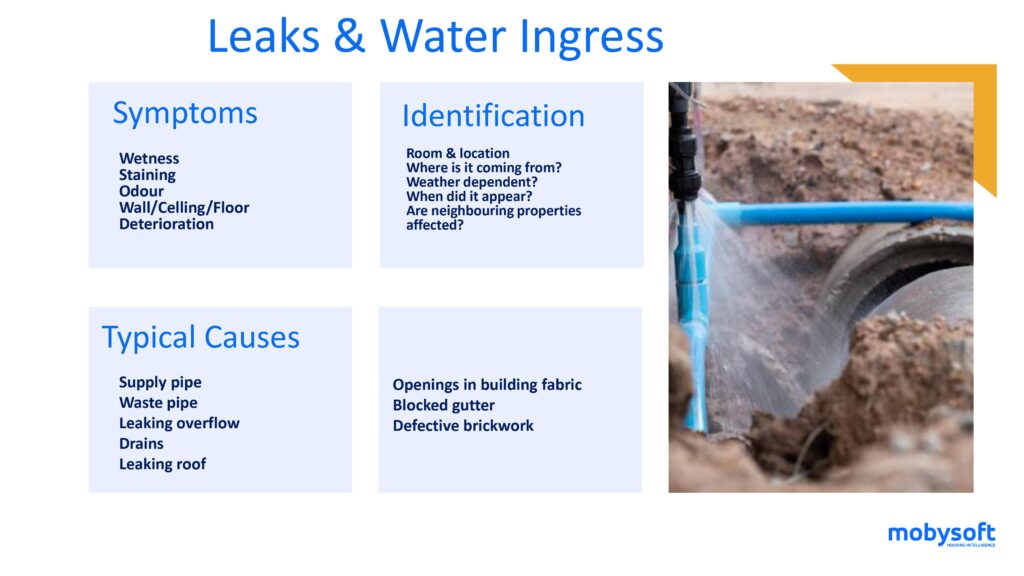
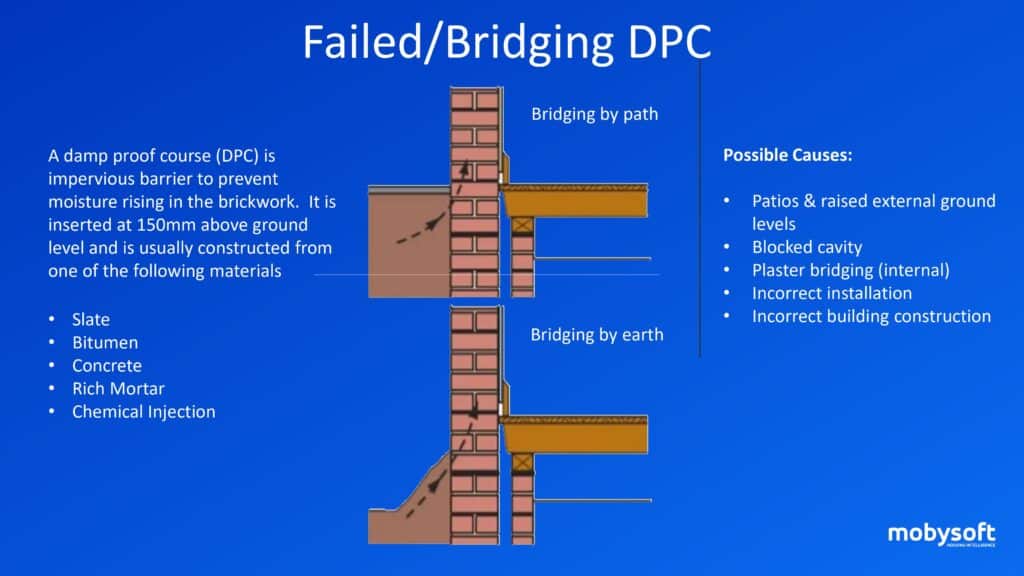
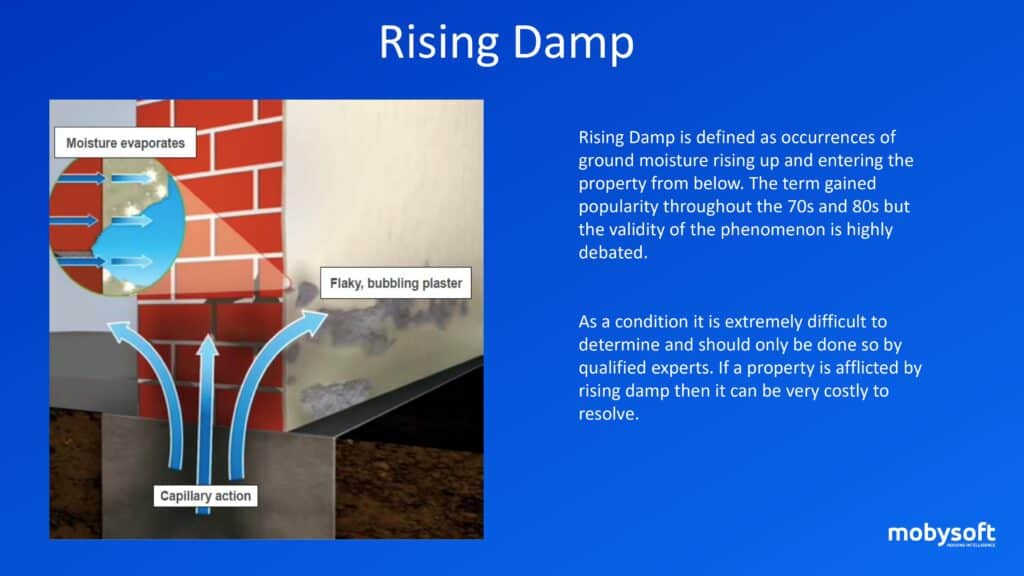
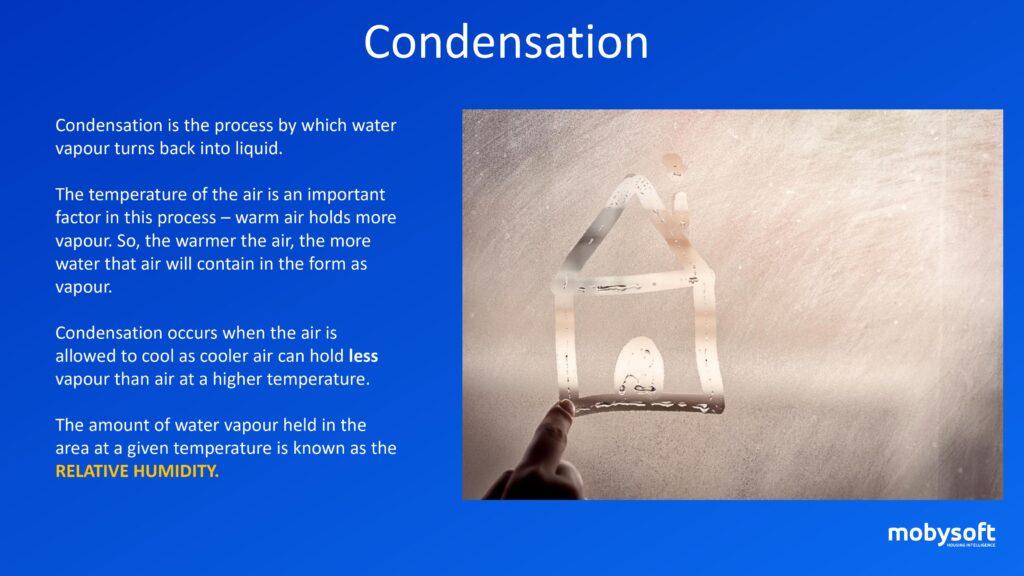
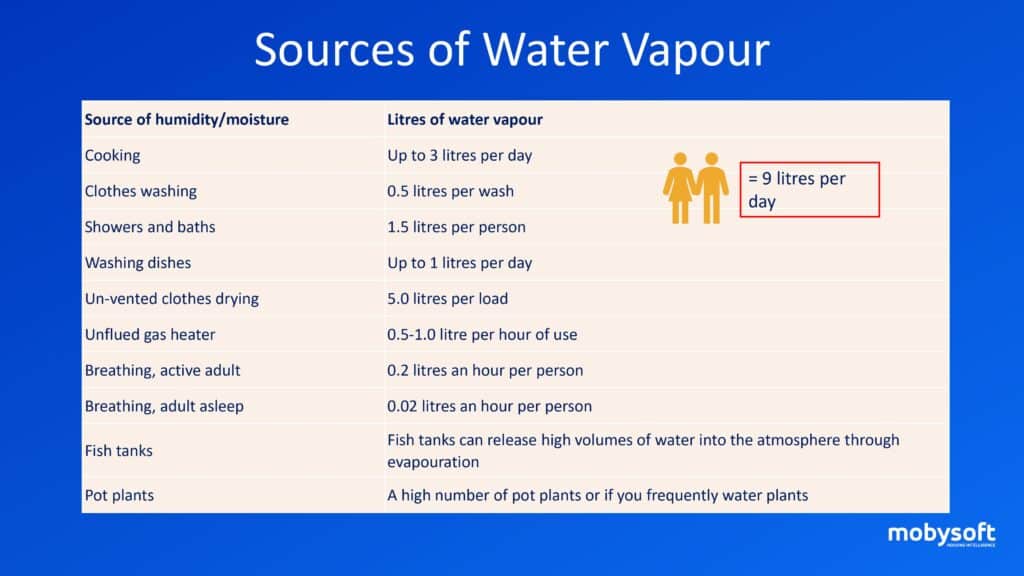
What Is Mould?
First and foremost, mould is a micro-organism that is found naturally in the air around us. In order to grow, it requires, much like any other micro-organism, a source of oxygen, nutrients, and water. It will only form and develop however when these three elements are present in an undisturbed state.
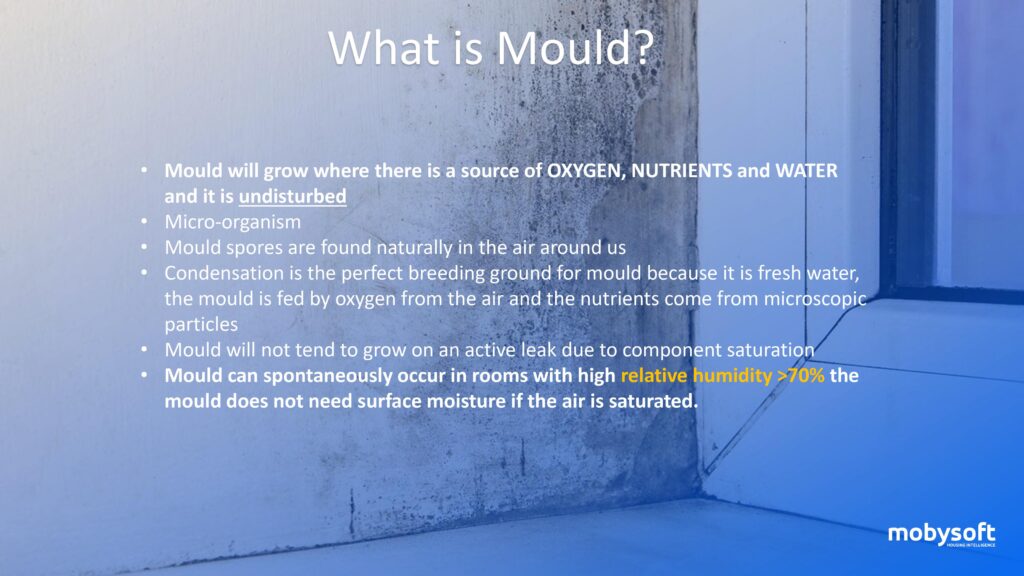
Inspecting for Damp & Mould
A lot of the criticisms of social landlords in relation to damp and mould issues centres around a perceived lack of proactivity in identifying and addressing the presence of mould. The images below details the standard process of inspecting for mould that would typically be used by repairs operatives and details some of the tools required to carry out such an inspection.
Landlords maintenance services undoubtedly deploy fully qualified personnel on mould inspection jobs, so why, as the media suggests, is it frequently misdiagnosed as condensation? One possible explanation could be down to that of stretched resources and staffing issues that mean existing inspection staff are being spread even more thinly. For example, if an inspector is allocated 15 minutes to go into a property and carry out a thorough assessment but when in attendance their PDA tells them they’re due at the next property in 5 minutes, are they given the time to do a thorough inspection? Probably not. We’ll explore this further in our forthcoming in-depth Damp & Mould: The Bigger Picture article later on in the month, so be sure to head back to these pages in a couple of weeks to learn more.
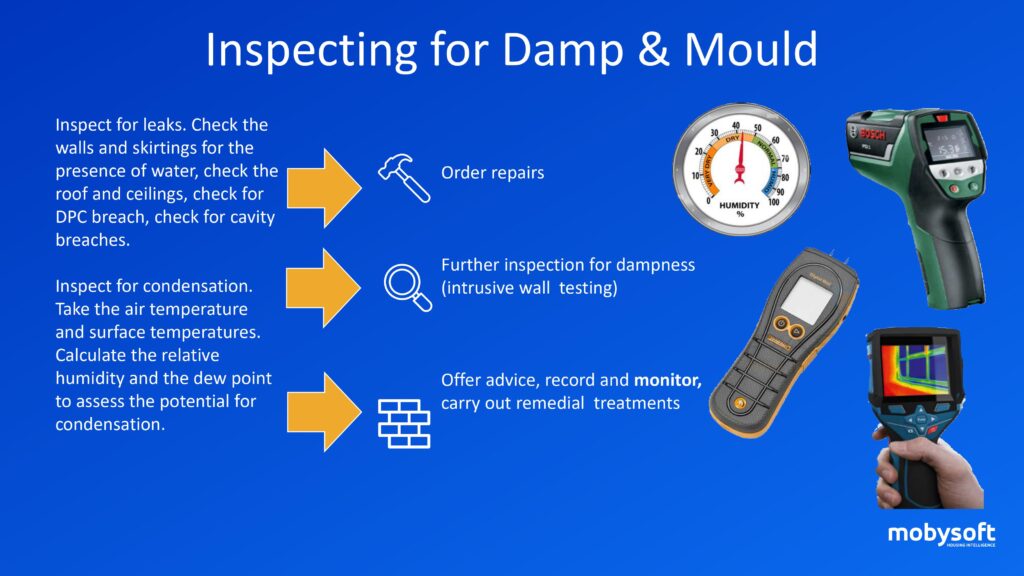
Ventilation, Treatment & Advice
We have often heard stories of tenants purportedly being advised to simply refrain from drying clothes on radiators and the like to avoid exacerbating their damp and/or mould situation. Whist this is sound advice, it is not a catch-all solution and if mould has already taken hold, will do very little to stop the spread.
The best way to combat damp and mould is the prevent it from happening in the first place (something that is dependent on both landlords and tenants taking the necessary provisions), but should a burgeoning damp and mould problem be identified, the actions detailed on the image below are a good starting point when it comes to cutting out damp and mould issues.
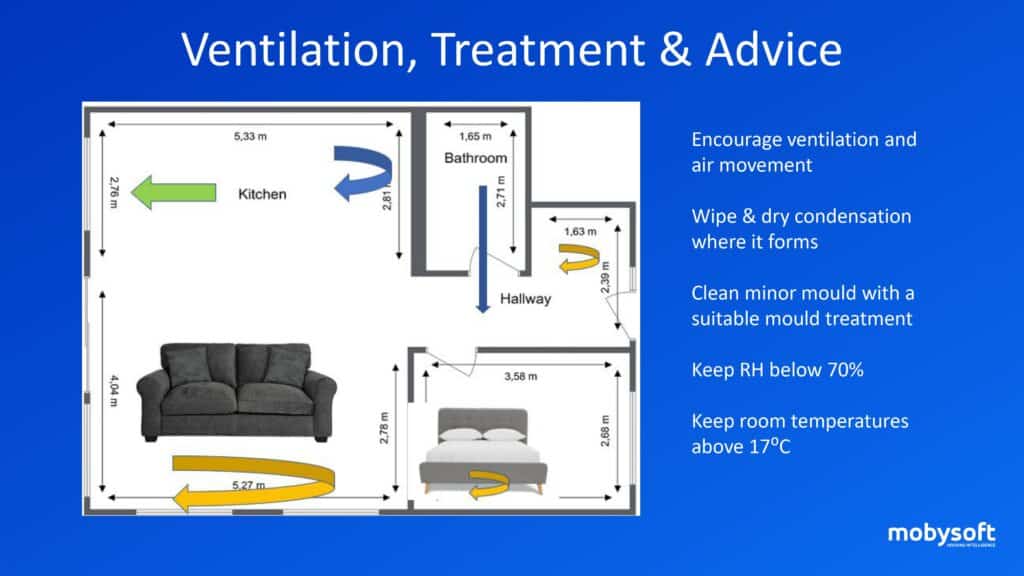
Why Is Damp & Mould Such an Issue Within Social Housing?
Throughout this guide we’ve lightly touched on some of the underlying factors driving the damp and mould situation being faced by social tenants and landlords alike. To distil the many facets of this issue into a couple of sentences would be doing it a disservice and so we’ll be exploring this further in a later article. As a top level view though, the following factors are key:
- Age and condition of housing stock
- Overcrowding within a property
- Tenant care and maintenance
- Repairs, investment, and maintenance
- Provision for thorough inspection regimes
- Disrepair canvassing and accurate reporting metrics
- Quality of homes at letting/new tenancy juncture
Hopefully the information contained within this guide has shone a bit of light on what is undoubtedly a contentious but often misunderstood issue facing the social housing sector at present. We’ll be delving further into the subject in our upcoming upcoming Damp & Mould: The Bigger Picture feature in a few weeks time and asking what can be done to overcome this pervasive issue, dissecting the assertion that it is landlords who are truly to blame, and exploring how Mobysoft and its products can help housing providers in the battle against damp and mould.
- This Month In Social Housing: September 2024 - September 30, 2024
- Customer Success Snapshot: Greatwell Homes - September 17, 2024
- This Month In Social Housing: August 2024 - August 30, 2024